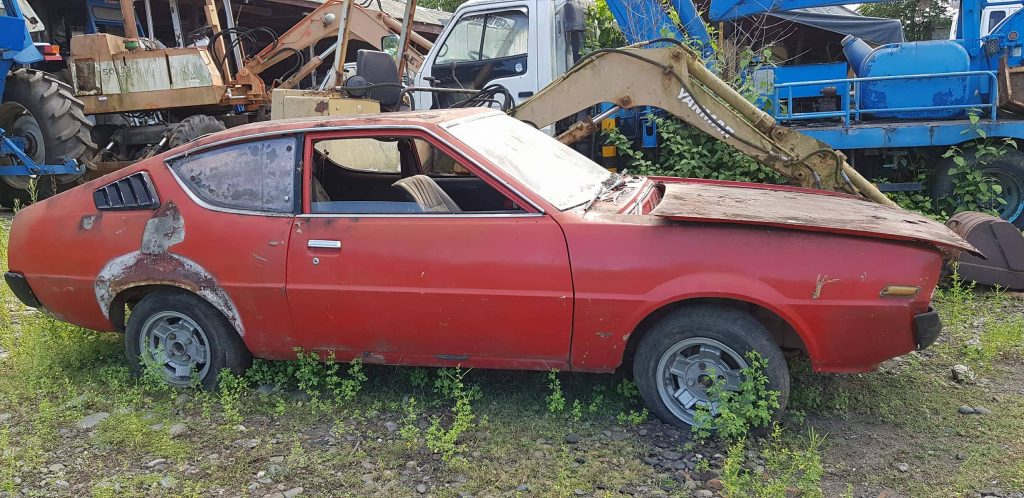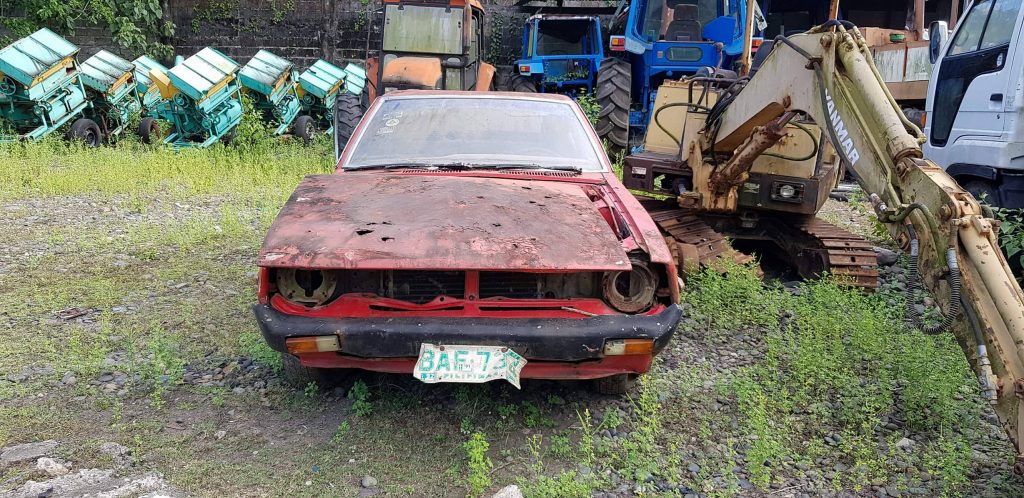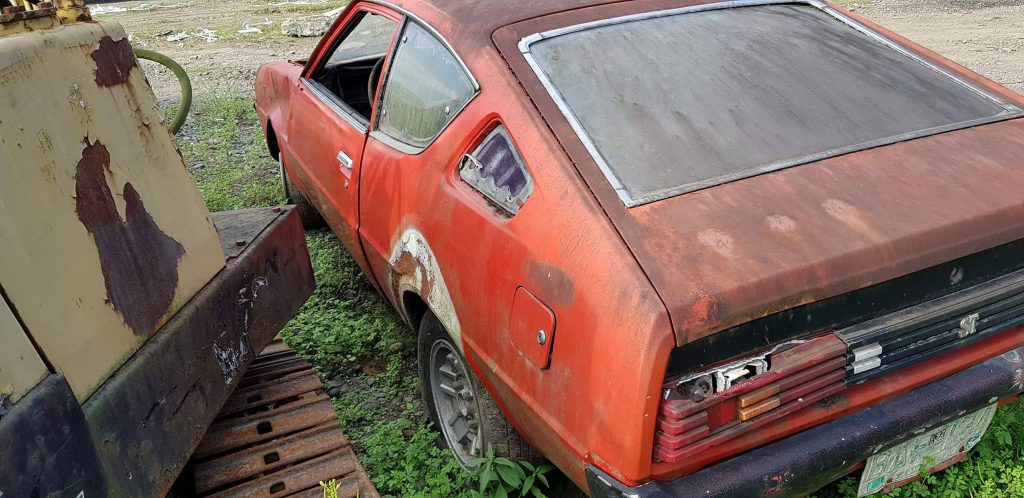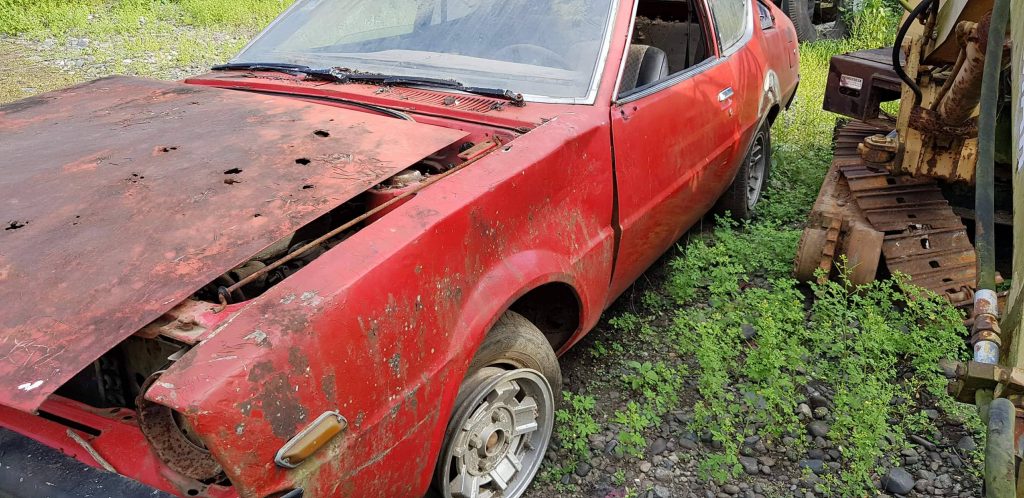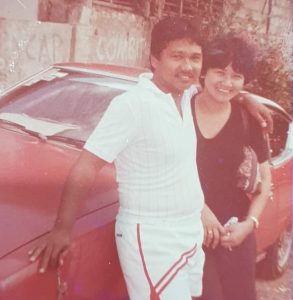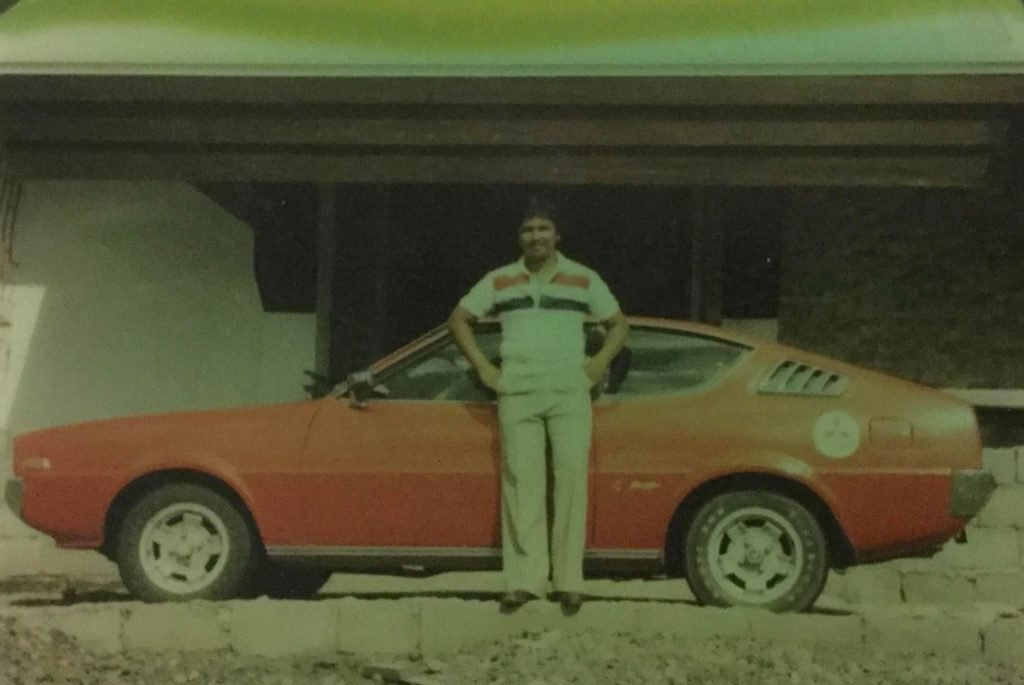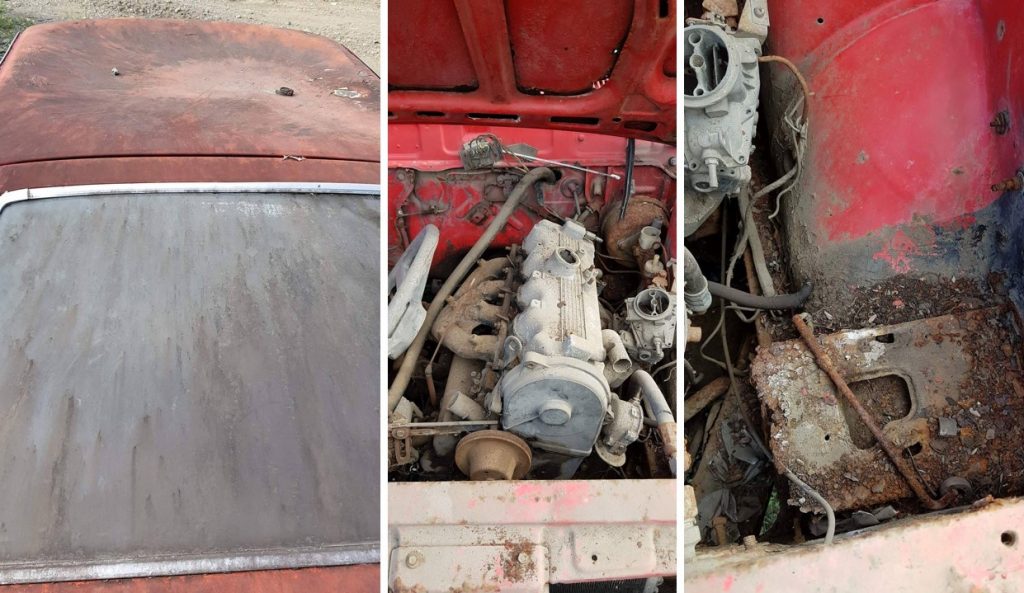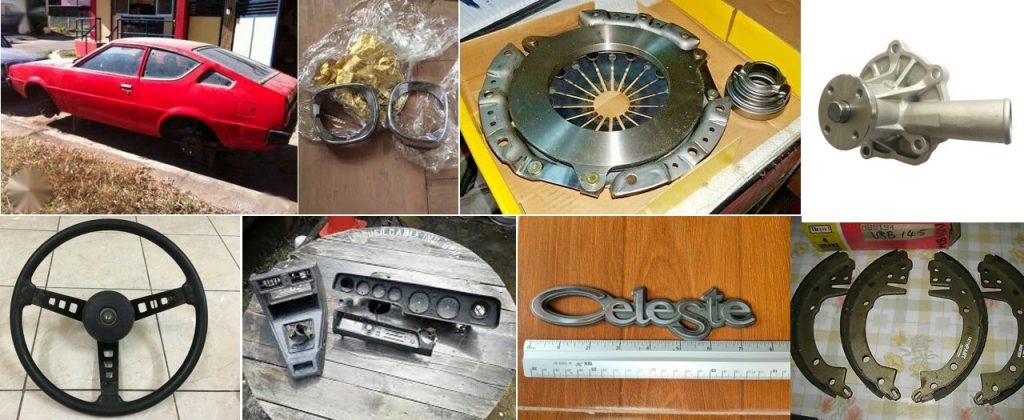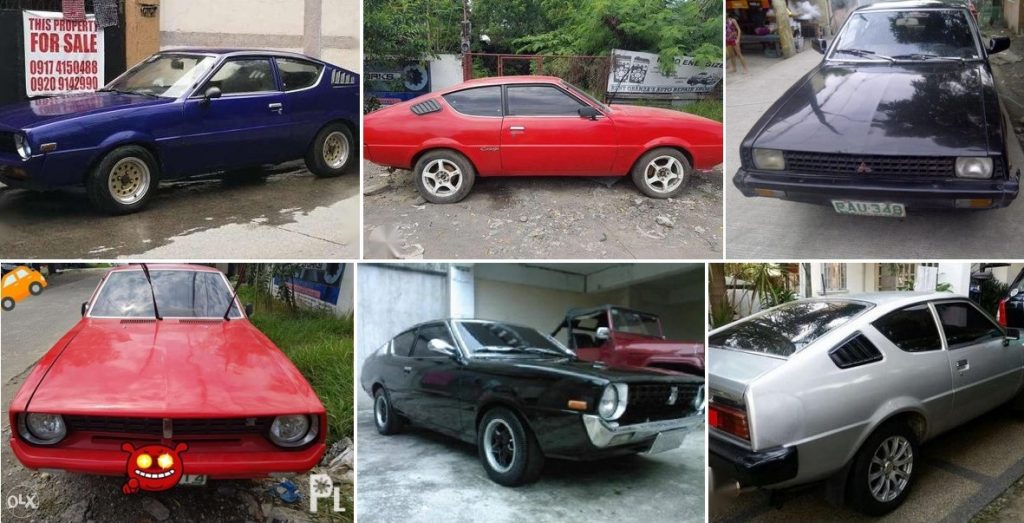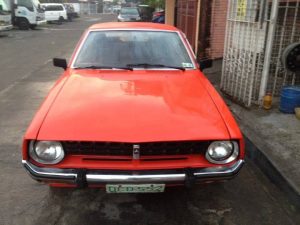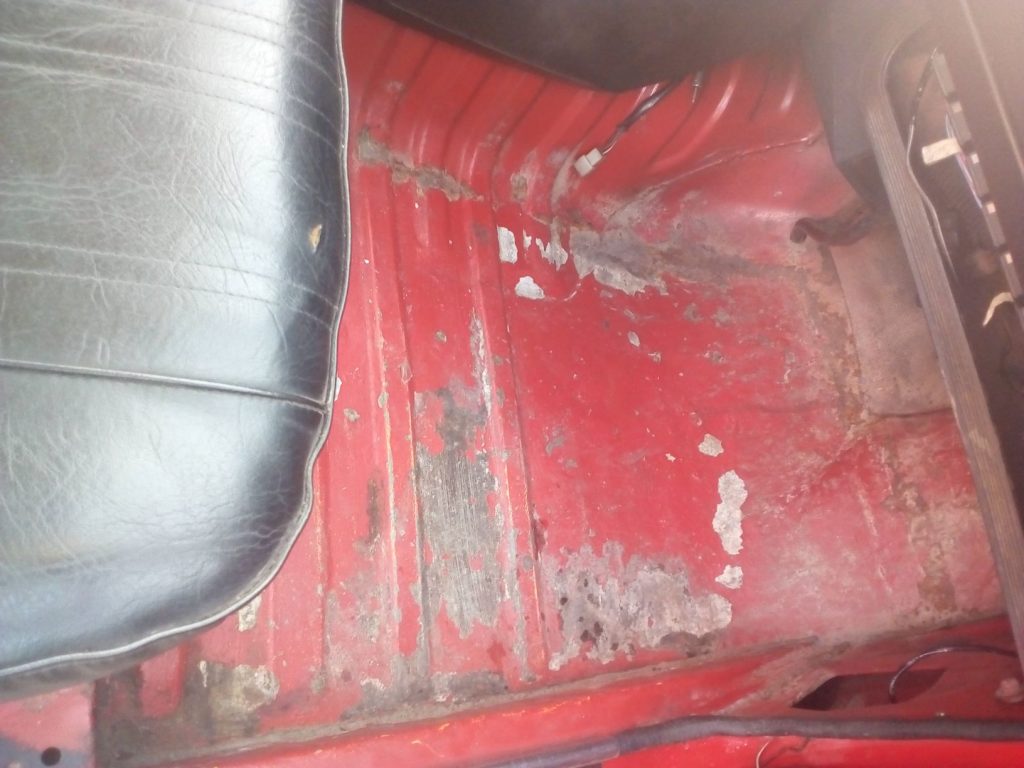In Part 1 of this Power Wheels Magazine Project Car series, we were approached by Aldous Rex Alingog who asked for our help to restore his father’s beloved 1976 Mitsubishi Celeste 1600ST after he saw our own restored yellow 1977 Celeste Project Car in the 2018 Manila International Auto Show (MIAS). Aldous hoped that restoring their Bone Red Celeste would be a great birthday gift for his dad, Roberto “Bob” Alingog, who bought the car brand-new in 1976 to impress his lady love, Emelyn Ambatali, who would eventually become his loving wife.
When Aldous asked their ROPALI employees to send him a photo of the Celeste, which was parked inside their property in Northern Luzon, he was quite disheartened to see how deteriorated the car was. He thought that it was kept inside a dry warehouse only to find that the car was left forlorn out in an open stockyard exposed to the elements. By looking at the photos, it can be seen that the body has severely rotted with rust boring through the hood; most body panels have been dented; the engine was disassembled and probably seized; the interior has deteriorated badly because the windows were left open; and the tires are all flat while the original aluminum alloy wheels show signs of oxidation.
History, Dreams and Memories
Most people, even some enthusiastic dyed-in-the-wool car restorers, will immediately walk away from trying to restore a car in this condition simply because the amount of money needed to bring it back to like-new condition will far exceed the current market value of the car. The strong arguments against a full restoration would be, “Why spend hundreds of thousands of pesos, several hundred hours of labor, and several months of aggravation, frustration, and anxiety restoring a car when you can buy a fully-restored similar model for the same amount of money?” or “Why spend a ton of cash on restoration that you cannot recoup when you try to sell the car after it is restored?” or “Why waste money on an old car anyway?” All these questions are economically sound arguments against automotive restoration.
Of course, there are sentiment arguments in favor of car restorations, as well. Some people buy and restore old cars because they want to preserve history since these cars existed during a time in our not-too-distant past. (Can you imagine famed Filipino director Chito Roño make Lualhati Bautista’s “Dekada 70” into a blockbuster movie in 2002 without using at least a couple of vehicles from the late ’60s and early ’70s during filming?) Some people buy and restore cars to fulfill a dream, especially vehicles that they couldn’t afford when they were younger. (We acquired our 1991 Mitsubishi Galant GTI project car in June 2016 simply because we lusted after one in the ’90s when we didn’t have the money to buy one.) Some people restore cars simply to rekindle good memories, especially of vehicles that they used to drive and regretted parting with or of cars that their family used to have. Aldous and his father’s red Celeste fall into this category.
Emphasis on Provenance
Some car collectors put an emphasis on “provenance” when they acquire a vintage, classic or collectible vehicle. Provenance comes from the Latin word provenire, where pro means “forth” and venire means “come” and from the French word provenir that translates to “come from” or “stem from”. In vintage car parlance, provenance simply means the origin of the vehicle, like who owned the vehicle (first owner and succeeding owners) before the current owner. Vehicles that were once owned by celebrities or famous personalities command high prices at auctions. Vehicles that were once owned by a parent or a close relative or a dear friend holds a highly sentimental and emotional value to the restorer or current owner. Such is the case of this red Celeste – it was owned by Aldous’ dad since new in 1976.
Even though Aldous was disheartened with the current rotted condition of his father’s Celeste, he was not discouraged. Since he’s had his share of restoration projects, we was not daunted by the arduous task of rescuing his father’s first-ever personal car. The only thing he was worried about was if the monocoque chassis of the Celeste has not rotted too severely to warrant its restoration. If the structural integrity of the chassis is rotted beyond economical repair, then it would not be feasible to restore the car since it could pose a danger to the occupants when the chassis breaks and collapses while the car is being driven at speed. From the photographs showing the Celeste sitting on the bare ground, it’s a safe bet that rust has infiltrated its chassis and other vital structural members.
Deciding on the Next Step
Before deciding on how to proceed with the Celeste’s restoration, we walked Aldous through two possible options. The first option was to take his dad’s red Celeste from the ROPALI stockyard in Cauayan, Isabela and deliver it by flatbed truck to JSK Custom Paint and Auto Works in Marulas, Valenzuela City, where they will try to salvage whatever parts and panels that can be saved, strip the car to last nut-and-bolt, and then subject it to an extensive and comprehensive restoration. Trucking the Celeste from Isabela to Valenzuela will already cost P50,000 and there’s no guarantee that the rusted chassis will not split in half when the car is pulled out of its resting place and lifted into the flatbed of the truck. Furthermore, there will be tons of missing parts and rotted parts that will be needed to be replaced, which will require a lot of time, negotiations, and money. Searching the internet for Celeste parts, going to the seller’s location or ordering the parts online, inspecting the parts, paying for the parts, and taking these parts back to the shop will require a lot of man-hours, logistics and funds.
The second option is to find a donor car so we can harvest the necessary parts needed for the restoration project. Since our project has a specific time line – the red Celeste needs to be presented on his father’s birthday – Aldous was leaning towards finding a suitable donor car, especially after he was informed that their car’s chassis was found to be extremely rotted, which make it impossible to move the Celeste without breaking it apart. Furthermore, Aldous thinks that having the 1.6-liter Silent Shaft 4-cylinder engine from his dad’s car overhauled will also cost a lot of time and money, which can be avoided if we can find a suitable donor car with a good running engine. Thus, it was decided that we will start searching for a suitable donor car.
Finding the Right Donor
Aldous asked us to search for donor cars, preferably 1976-1978 Celeste models since these have round headlights instead of the 1979-1981 models, which have square headlamps as well as different signal lights, front fenders, grille, and bumpers. as well as a bigger back glass for the rear hatch. We started looking for a suitable donor car around April 2018, and after several online searches as well as going personally to several sellers’ locations, but the choices were few and far between because there were not a lot of Celeste models for sale. On June 2018, we found a red 1978 Celeste in Sucat, Parañaque that had a reasonable asking price for its perceived good condition. We showed this to Aldous, who considered it since it’s the same color as his dad’s ’76 Celeste so it wouldn’t be difficult to debug it and finish it in time for his father’s birthday.
On June 28, we met up with the seller to look at the ’78 Celeste. The car was presented quite well – it was clean and the paint was shiny, indicating that the owner was taking good care of the car. He showed me around the car and showed me the engine compartment, which was immaculately clean as well. The registration was up to date, which shows that the Celeste was being driven on a regular basis and not just parked in the garage. The seller also showed me the interior and pointed out the he had the carpet and insulation removed to expose the metal floor and show that it is solid and not rusted. Likewise, the trunk was devoid of rubber mats or carpets to show the solid and rust-free spare tire tub and trunk floor. Up to this point, we were convinced that we found the ideal donor car.
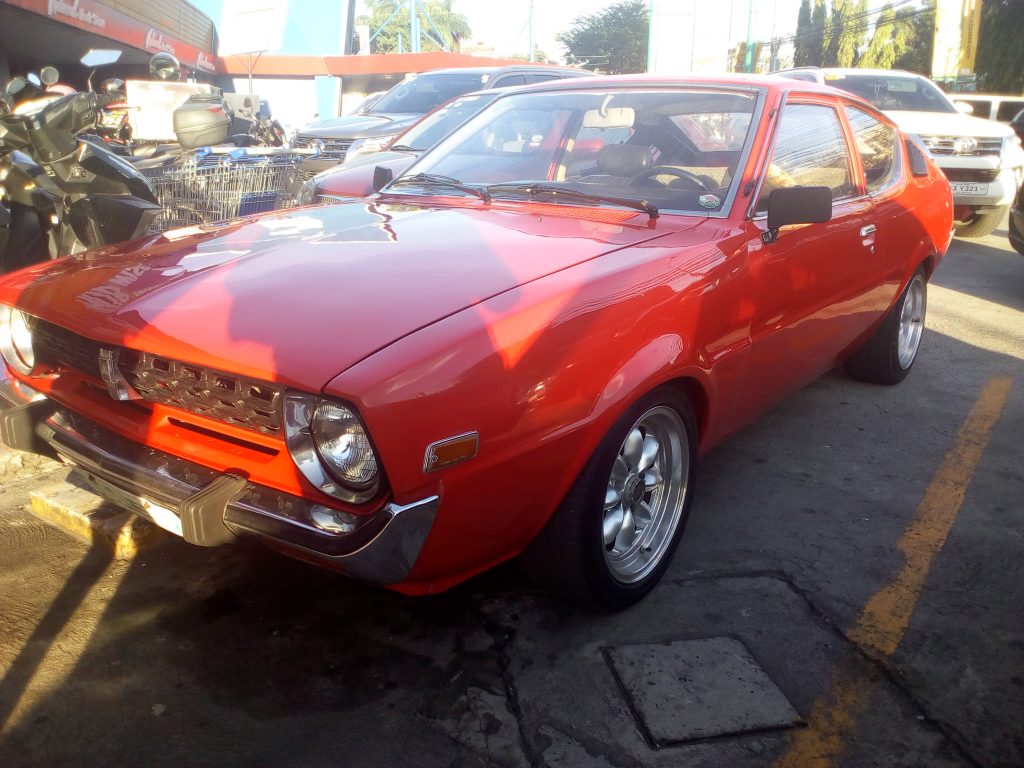
Upon initial inspection, the red 1978 Celeste looks good and sporty with its 15-inch Banana-type wheels.
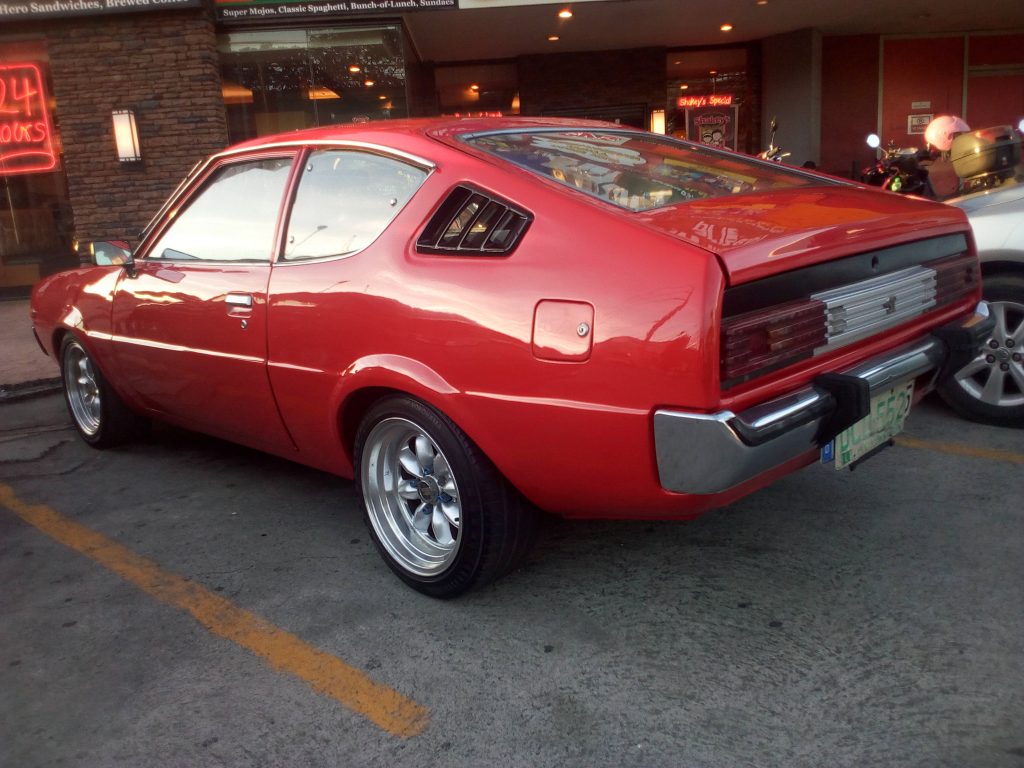
The chrome bumpers still had the rubber bumper guards but we found that a rust-caused hole on the rear bumper.
And here’s where we stumbled upon any car restorer’s dilemma: this ’78 Celeste is simply too nice to disassemble and use as a donor car. On the other hand, Aldous cannot just wax this car and present it to his dad as a birthday present because it has no connection to his father whatsoever. It simply is not his father’s red ’76 Celeste that was also their old family car. Besides, we don’t know much about this car’s history, so we don’t really know about the condition of its mechanical components. Aldous wouldn’t like it if the Celeste stalled or broke down while his father was driving it. We were caught in a crossroad and we gave Aldous time to decide if we were going to get this car or if he wants us to look for other donor cars, perhaps those that won’t be bother our conscience when we dismantle and harvest parts from. Of course, time is a luxury that we don’t really have.
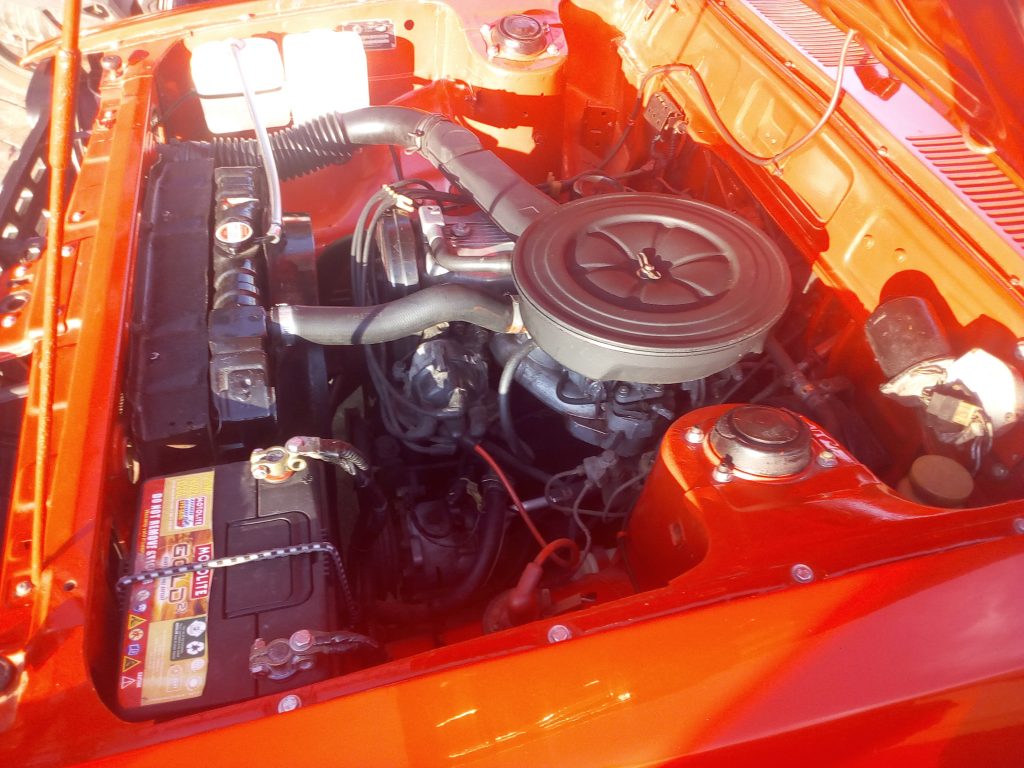
Like the rest of the car, the engine was clean and immaculate. We just wondered why a bungee cord is holding the battery instead of a metal strap.
Will Aldous pull the trigger and buy this ’78 Celeste so we can use it as a donor car? Find out in Part 3 of our Power Wheels Project Car series on Bob Alingog’s 1976 Mitsubishi Celeste 1600ST. Stay tuned!
 Power Wheels Magazine A Notch Above
Power Wheels Magazine A Notch Above

